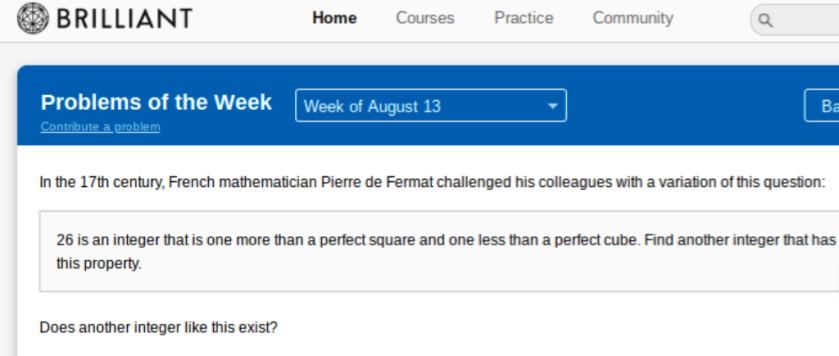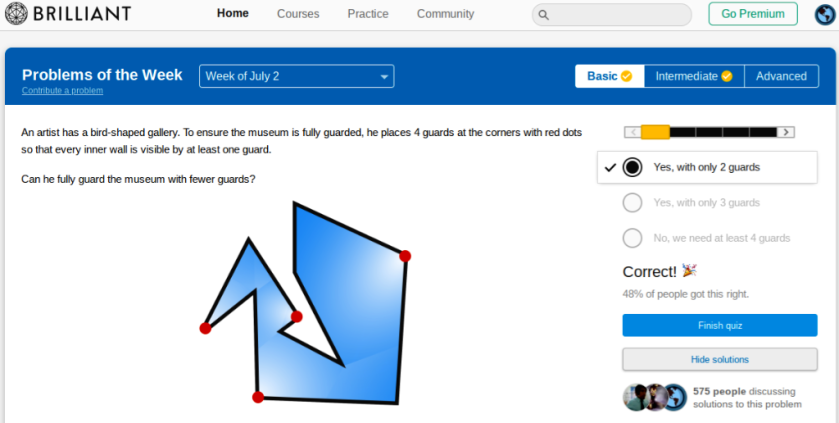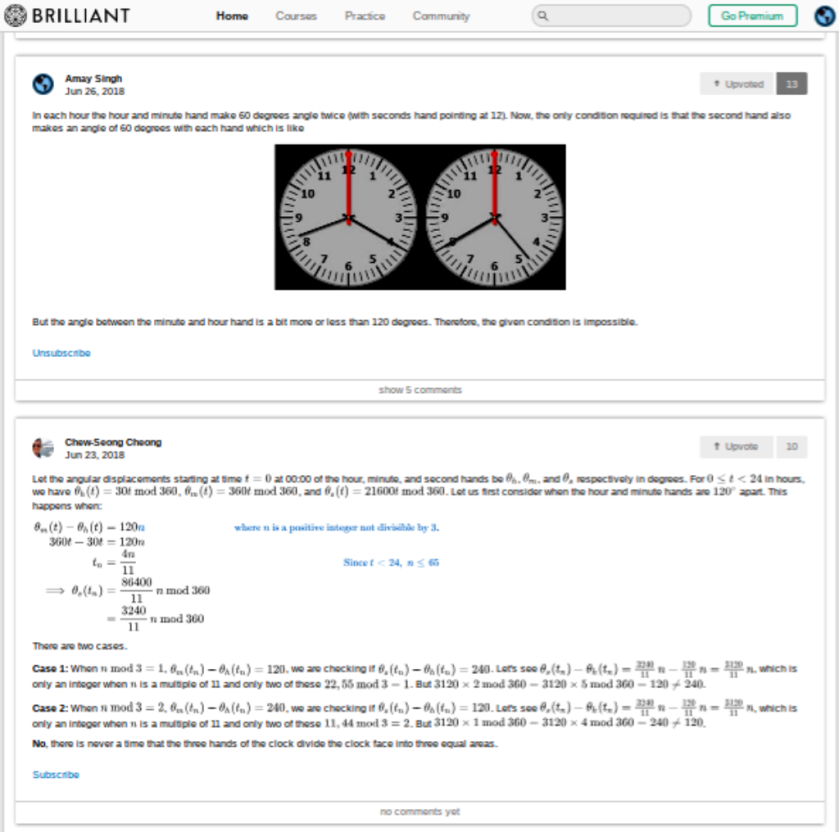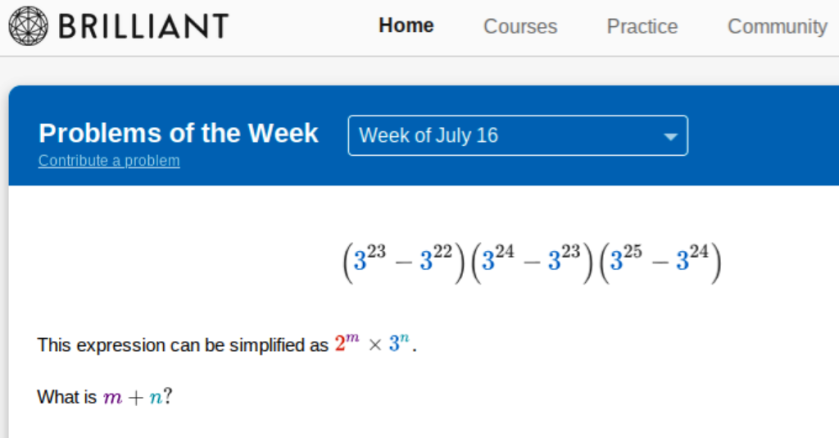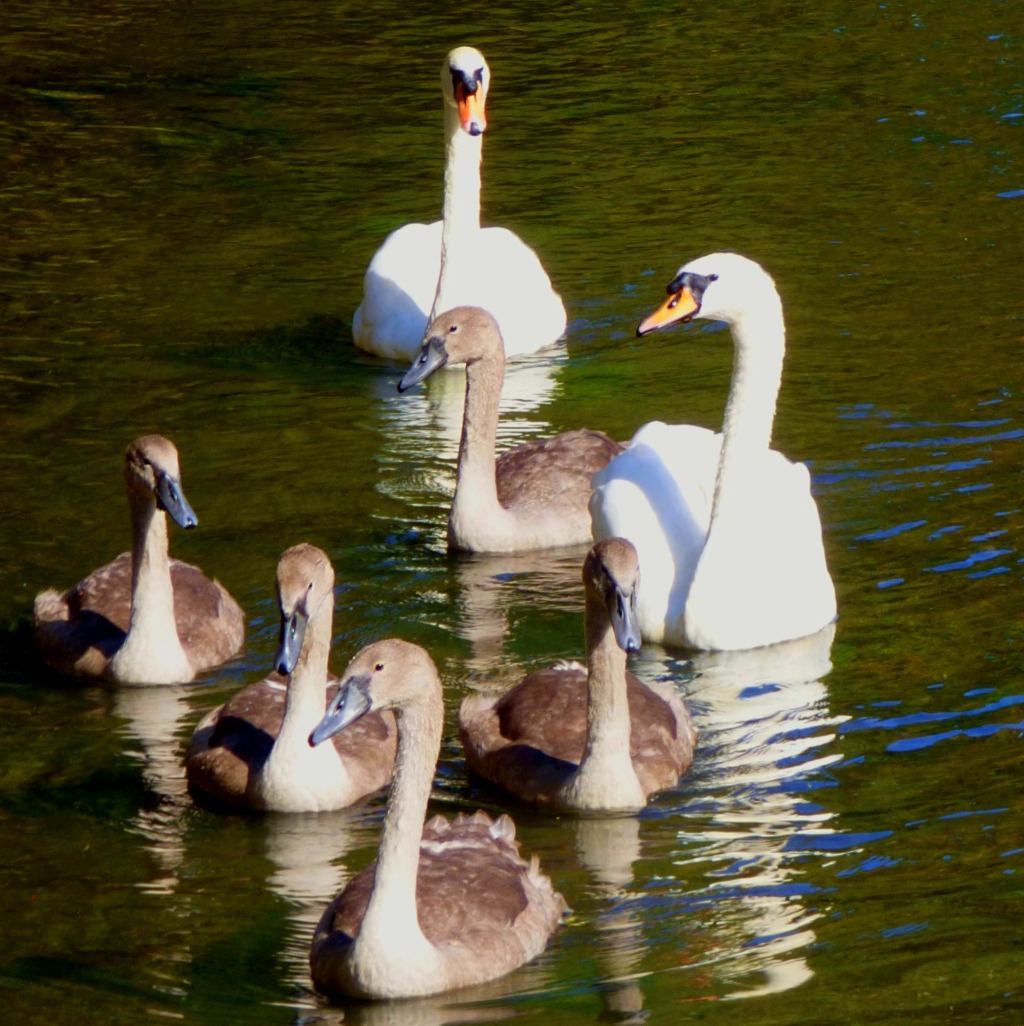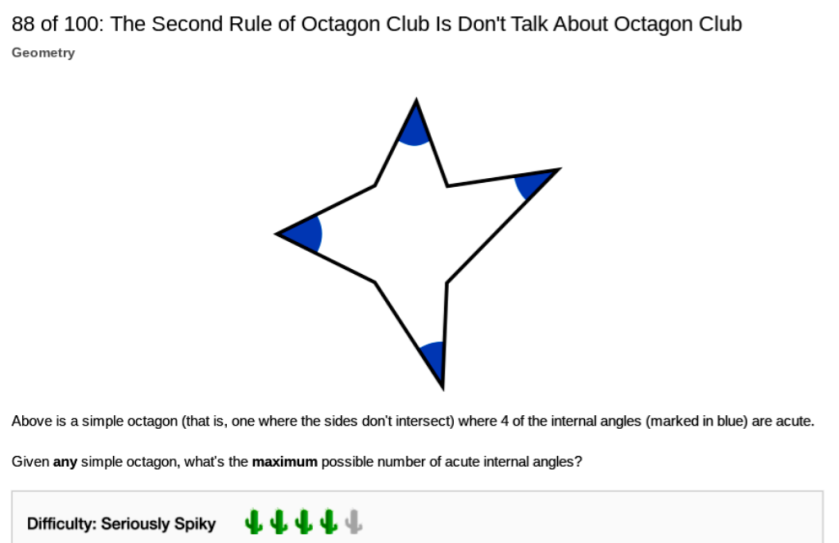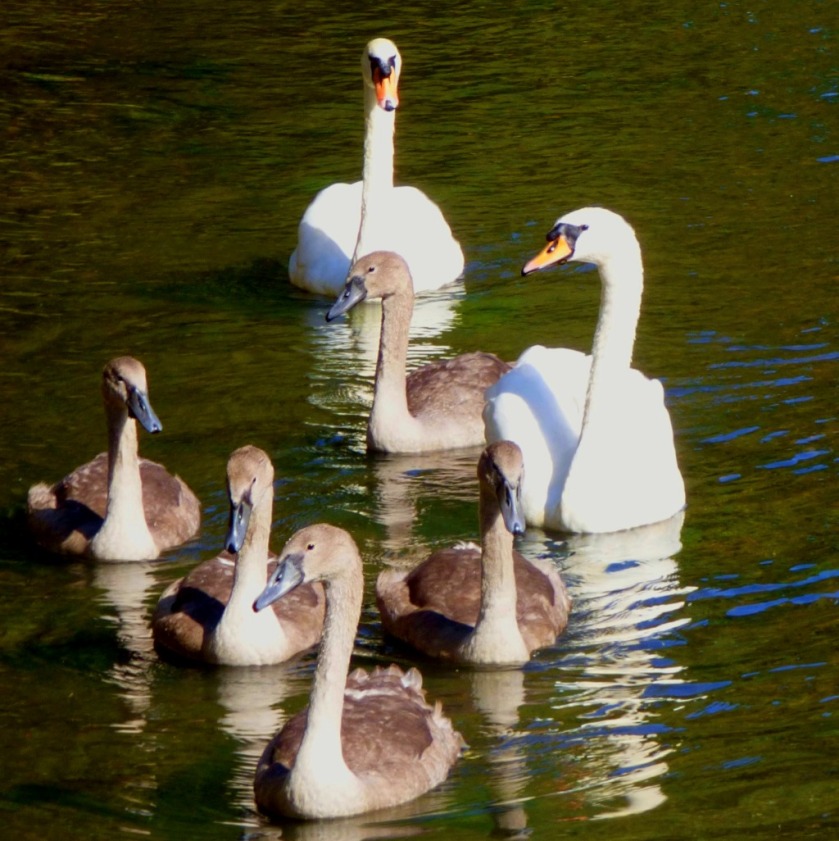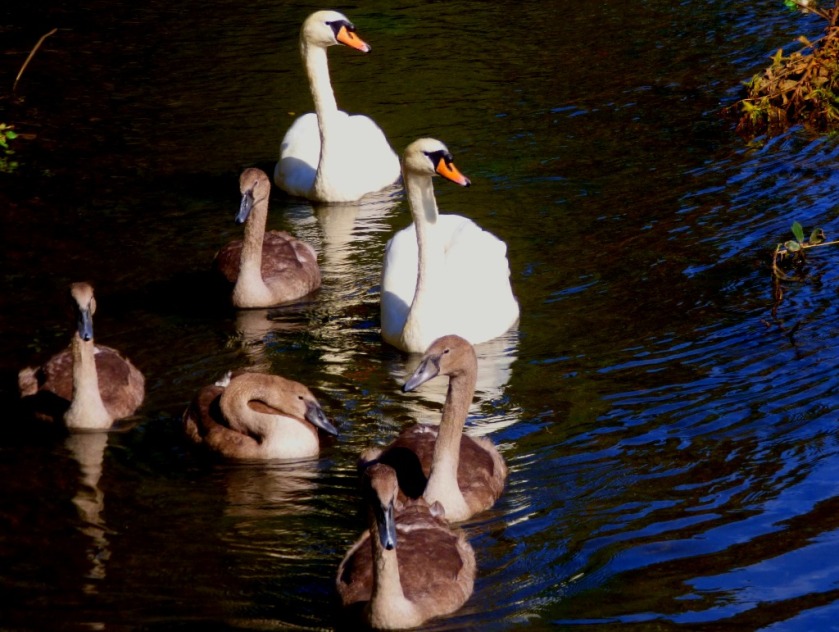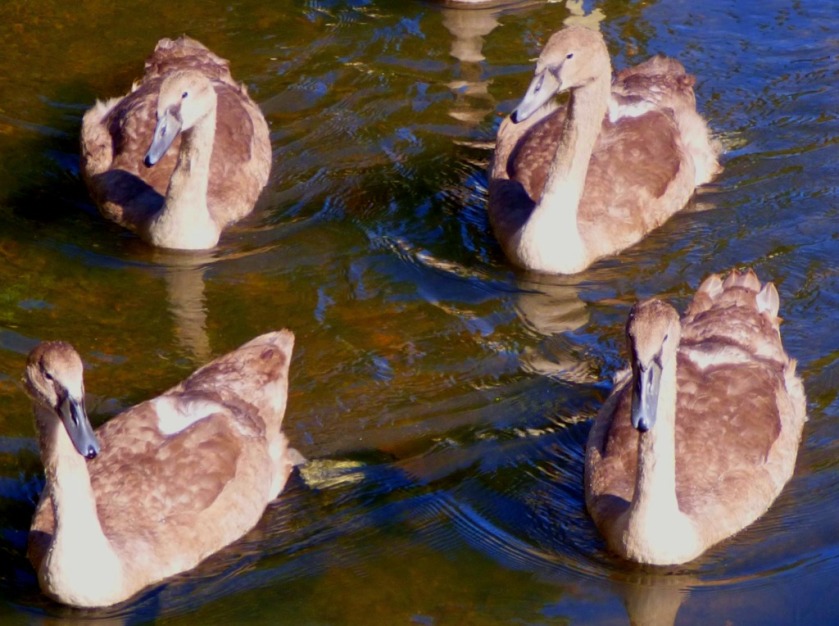INTRODUCTION
On Saturday I produced a mixed bag of offerings from brilliant.org, promising to provide solutions in a later post, and now that time has arrived.
THE WORST SET PROBLEM I HAVE EVER ENCOUNTERED ON BRILLIANT

I got nowhere close to solving this for reasons which will soon become obvious.
Here is the official “correct” answer:
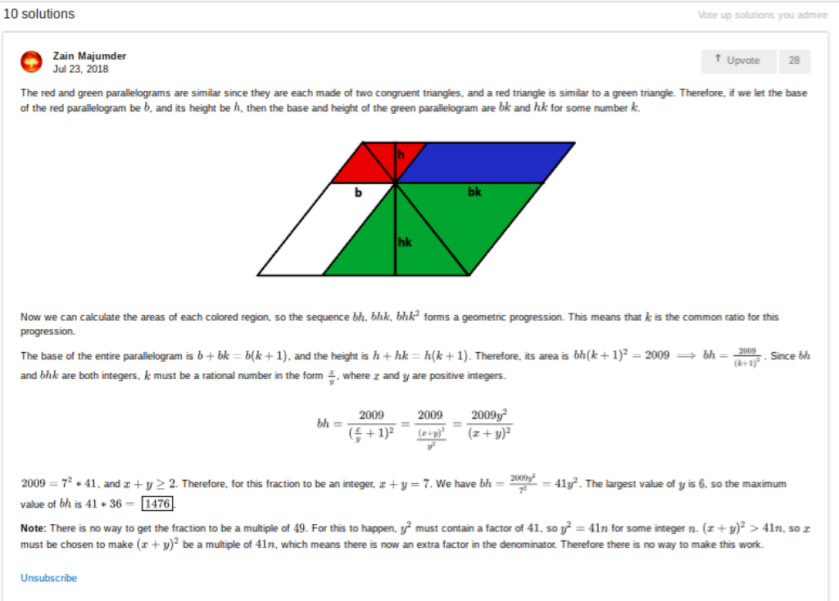
My beef is with that diagram. The answer given works on the red section being the largest part of the parallelogram whereas the diagram shows it as the smallest, which was the basis on which I worked. This is way beyond a diagram being “not to scale”, which I have no great issue (the most famous of all such schematic diagrams, variations of which can now be seen representing transport systems in cities everywhere in the world is of course H C Beck’s London Underground diagram), but showing what is actually the lagrest single area of the diagram as the smallest is a bridge too far (Beck enlarged the central area so the stations were easier to see, but he did not actually make it cover a larger area than the surrounding suburbs, merely a less small area than was actaully the case, which to me is what if the approach is to have any validity is what “not to scale” should mean). The diagram in this question was literally worse than useless – wkith no diagram at all it would be have been a better question than it was with the actual diagram.
ANSWERS TO THE TWO FABULOUS PROBLEMS
First, what I now call the “Mendrin Circles Problem” after its creator:


Here is Albert Lau’s published solution:

Second, the problem of Mr Mediocre’s Lawn:
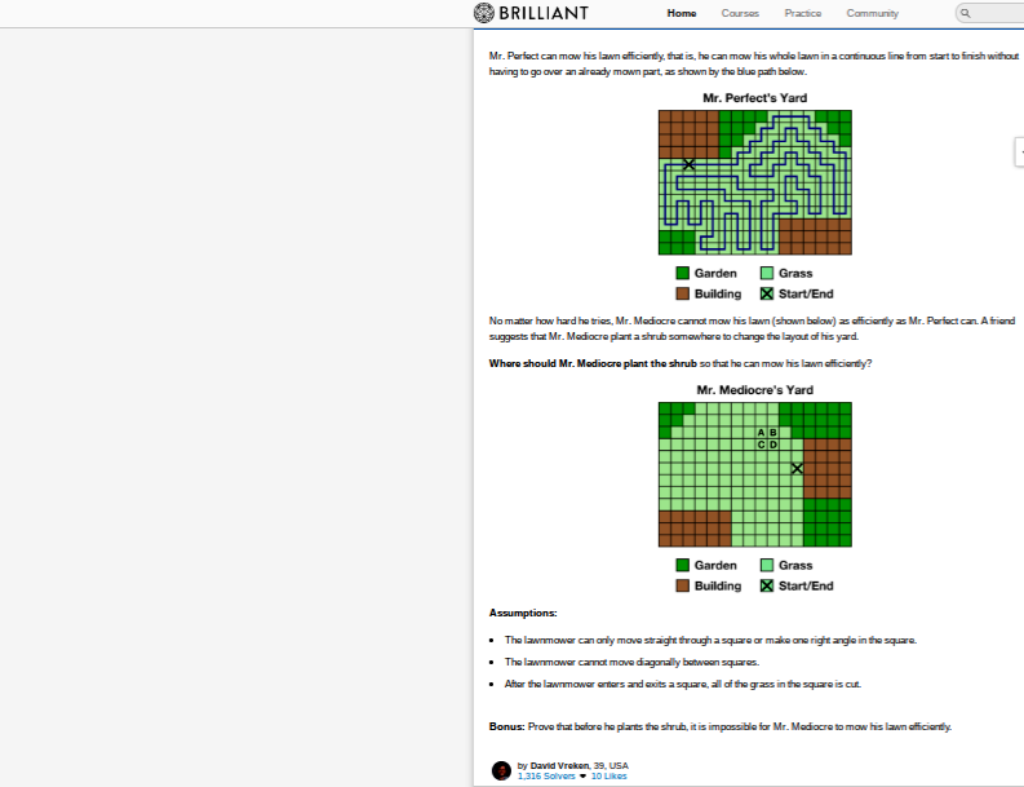
First the answer:

Jeremy Galvagni’s published solution was worthy of this splendid problem:

The ‘chessboard shading’ in this diagram is the key to the excellence of this solution – it rules out A and D, while B’s location rules it out, leaving only C as an option.
THE BONUS PROBLEM
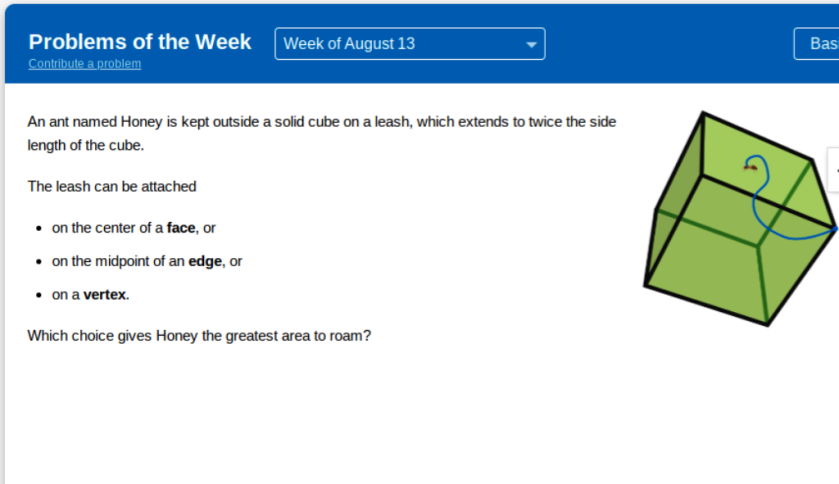
The answer:
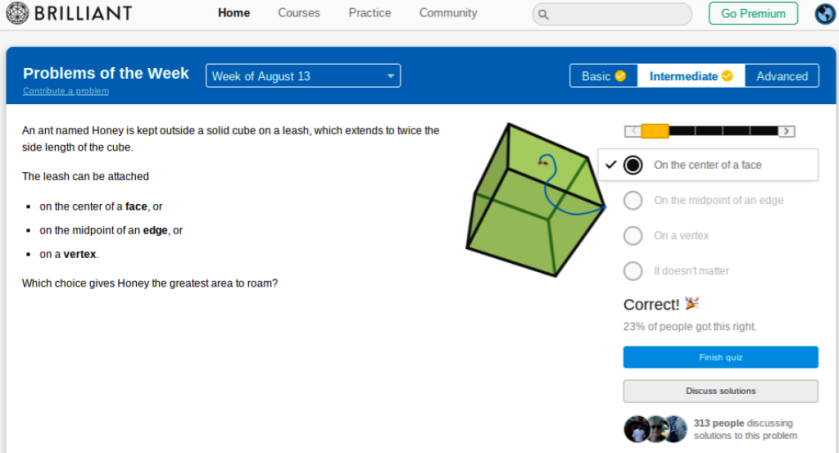
Attaching the leash to an edge or a corner introduces restrictions which are not there if it is attached to the centre of a face. At full extent Honey can be diametrically opposite her starting position, which means that the entire surface of the cube is available to her.
A NEW PROBLEM
This is a very old problem indeed:


